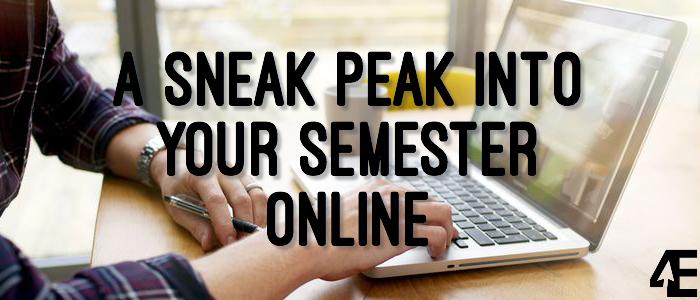4E would like to introduce a new series: Student Group Spotlight! In each installment of this series, we will be highlighting one lesser-known group on campus. For our very first Spotlight, we interviewed Devon Wood (MSB ’16) and Stephanie Kim (MSB ’17) from GU Women Who Code.
For those who don’t know, what is GU Women Who Code?
GU Women Who Code (GUWWC) is an initiative started in Spring 2014 to provide opportunities for women to learn about computer programming, no matter what their skill levels, and to encourage dialogue about women pursuing careers in technology. Our mission is to build digital literacy for today’s job market and to raise the odds that more women will consider careers in the technology field. We primarily target women who have no previous coding experience, but we have members at all levels of learning, and from all parts of Georgetown. We hold several programming lectures every semester, taught by Professor Lisa Singh in the computer science department. Students can also meet with volunteer mentors to work on programming exercises and projects based on material taught in the lectures. This year, we are also hoping to add more events such as visiting speakers, special lectures on advanced programming topics and networking events with local alumni in the technology field.
What made you (the organizers of GUWWC) decide to start this organization?
The idea of a women’s programming initiative began after numerous women in the computer science department expressed concern that many of their friends were interested in learning about computer programming, but had no experience and were hesitant to commit to a full academic course. We realized that there could be a much better way for women to get involved, especially at the introductory levels.
As GUWWC is a new-ish organization, what was it like getting it off the ground? How did you advertise for new members, get university support, etc?
While GUWWC was founded in Spring 2014, we were really able to hit the ground running in the Fall 2014 semester. Knowing that most people hear about campus events and organizations through social media, I created the GUWWC Facebook page and posted a Facebook event to publicize our information session, which was only a few days away. Despite the short notice, we ended up with an amazing turnout, and we now have over 500 members! Soon after creating our Facebook page, we designed the official logo and created the GUWWC.org website. Our website features our upcoming events, photos, videos, blog and more! We also like to stay active on Twitter (@GUWomenWhoCode) to promote our events, post interesting articles and connect with the larger tech community. Hopefully, we’ll start becoming more active on Instagram this semester. To further promote GUWWC, we created a video about the story of GUWWC and why it’s important for students of all backgrounds and interests to get involved.
Coding is a very abstract concept for a lot of people on campus. How do you make it more of an “approachable” subject/how do you make it easier for inexperienced people to get into it?
I think the most important part of getting people into programming is simply giving the first lecture. If we can get people to attend just one lecture, they can get a basic sense of what programming is about and are then much more likely to continue with the program. The second important part is to give people the opportunity to learn at their own pace and not feel pressured to suddenly commit long hours to learning how to code. Once the pressure is off, people can have a lot more fun learning, even with minimal experience.
And for anyone reading this who might be interested, what are some examples of coding in everyday life?
Programming is used in almost everything we do. Every time you use touch ID to log into your smartphone, there is an intricate and highly adaptable algorithm that is able to identify the different physical attributes of fingerprint. It is through the complex coding of that algorithm that it is possible to add higher security and privacy measures to smart phones, where people keep much personal information.
Whenever you watch Netflix and rate your movies and TV shows, you give Netflix crucial information and user preferences that is added to an algorithm that knows how to predict similar movies and shows that you might enjoy. The more data that Netflix gains, the better it can predict user preferences, improving your Netflix experience.
Thanks to Devon and Stephanie for answering our questions! For more information about GU Women Who Code, check out their website, Facebook, Twitter or Instagram!
Photos: guwwc.org










